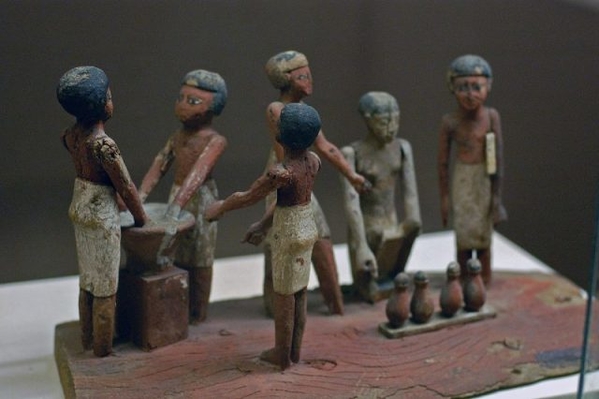Iron Age brewery found in East Anglia
Added: Thursday, January 31st 2019

Major road works in Cambridgeshire have unearthed evidence that beer was being brewed in England as long ago as 400 years BC. Improvements to the A14 between Brampton and Huntingdon have produced shards of pottery that indicate that Iron Age people were making porridge, bread and beer from locally-grown grain.
Tiny fragments of charred residues from beer-making were discovered from earth excavated with other archaeological finds, including the bones of a woolly mammoth, abandoned villages and burial sites.
The A14 itself is a road of historic importance, linking the A1 – the former Great North Road – and the Roman Ermine Street.
Lara Gonzalez, an archeo-botanist working on the project, says: “Looking at fragments under a microscope I found micro structures of remains had changed through the fermentation process and air bubbles are typical of those formed in the boiling and mashing process of brewing.
“The porous structures of the remains are quite similar to bread but residues of beer-making show evidence of fermentation and contain larger pieces of cracked grains and bran but no fine flour.”
No mention is made of hops as they didn’t begin to be used in England until the 15th century. But the work in Cambridgeshire clicks into place another piece of the jigsaw that shows the ancient roots of brewing.
In 1996 archeo-botanists working at Cambridge University launched Tutankhamun’s Ale, brewed by Scottish & Newcastle Breweries, using a recipe discovered in Ancient Egypt. (A model of brewng in Egypt is shown above.) As a result of six years’ research in the kitchen complex at Tell el Armarna, the birthplace of Tutankhamun and the site of Queen Nefertiti’s Sun Temple, beer-making vessels and dregs and starchy residues were found in the remains of clay brewing pots.
It was possible to reconstruct the brewing methods. Yeast cells in beer dregs were also discovered: it’s thought that yeast deposits were kept and used from one brew to the next.
The work by the scientists also found that the people of the Old World were skilled in the art of turning grain into malt by drying and heating in the sun. Different styles of beer were produced depending on the colour of the malts.
No hops were used but the researchers added small amounts of coriander and juniper, which they knew were used in the baking process. Emmer wheat, known to have been used for brewing in the Old World, is still grown in Turkey, and this was used to brew the beer by S&N. The only modern ingredient was a warm-fermenting ale yeast.
The finished beer was 6 per cent alcohol and was launched at Harrods in London’s Knightsbridge, owned at the time by the Egyptian al-Fayed brothers. The beer was a pale, hazy gold colour and had a delicately fruity, toffeeish and spicy aroma. There were more toffee and spicy notes in the mouth and a dry and quenching finish. For a beer made without barley or hops, it tasted definably like beer.
Earlier in the 1980s, the Anchor Brewery in San Francisco brewed a beer called Ninkasi, named after the Goddess of Brewing in Babylon. The recipe had been translated from clay tablets and the beer was brewed with a blend of small loaves and malted barley. Dates were added as the brewery and its advisers knew the Babylonians referred to the “sweet thing” in beer making. Honey was also added as honey was used in bread making in the Old World.
The finished beer was 5 per cent and was a cloudy, orange-red colour. It had a powerful aroma of honey and dates. The palate, despite the use of the “sweet thing”, was surprisingly quenching and the finish was dry. Once again, a modern yeast was used and we will only know what ancient beer tasted like when DNA research can recreate a yeast strain from the dawn of civilisation.








